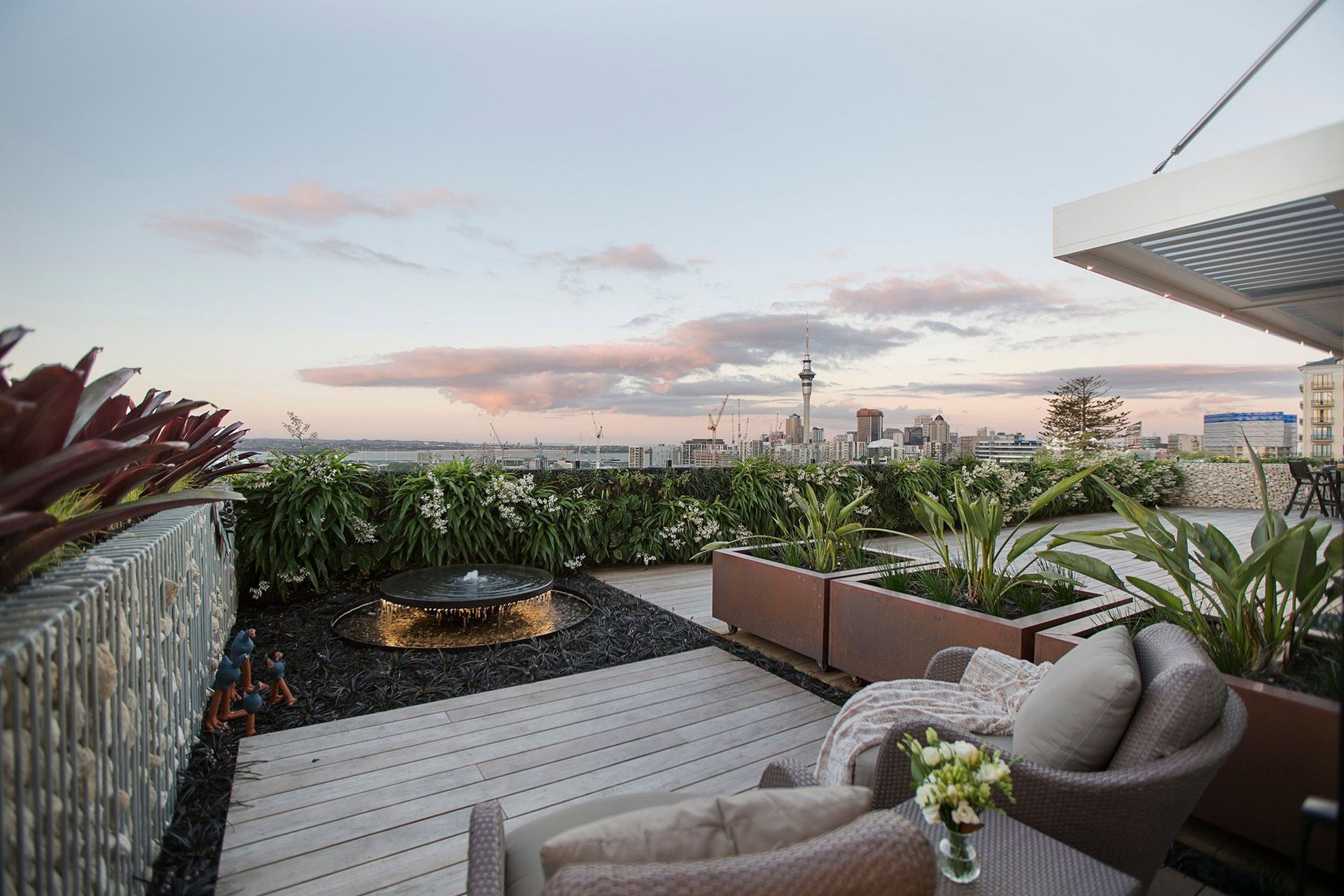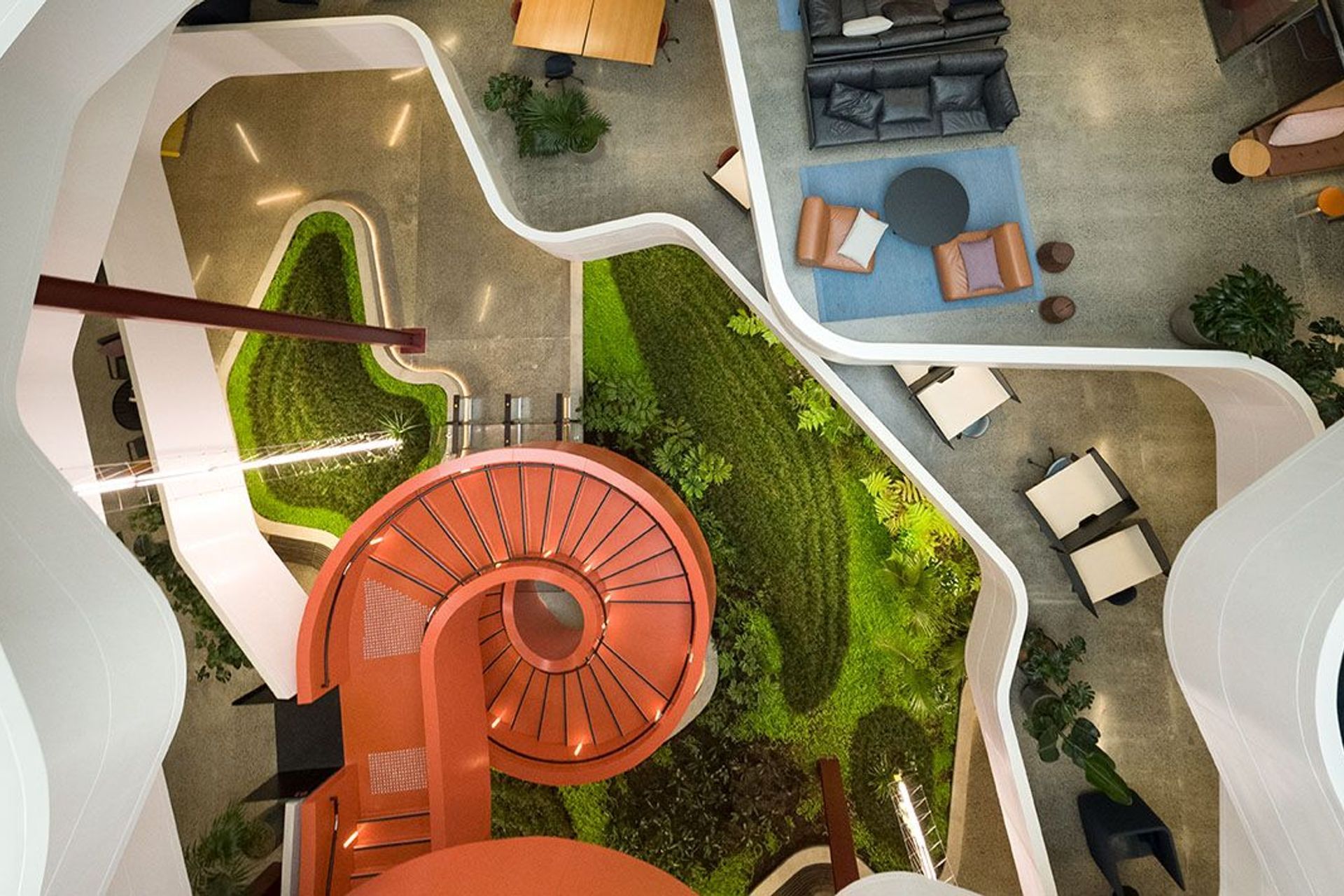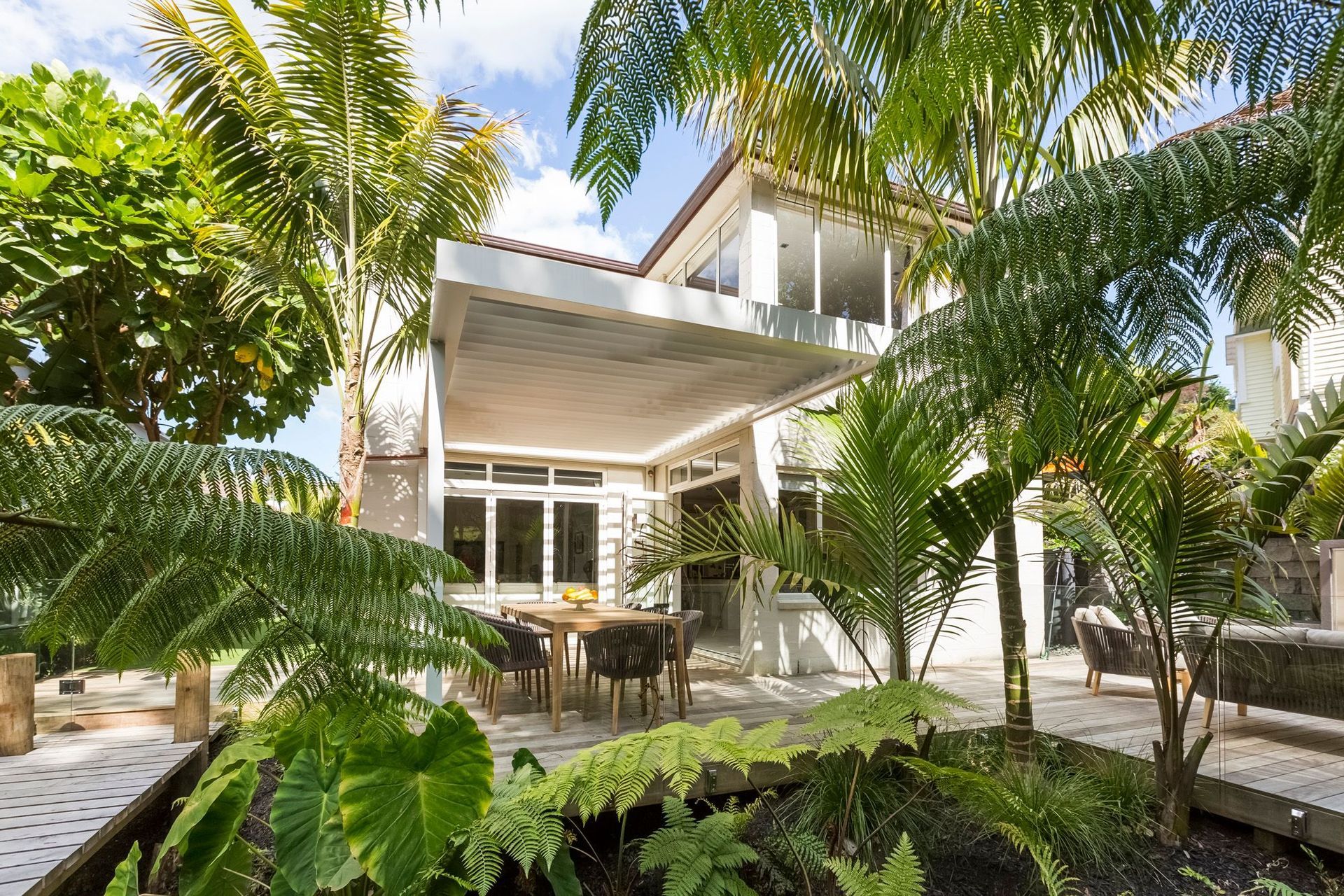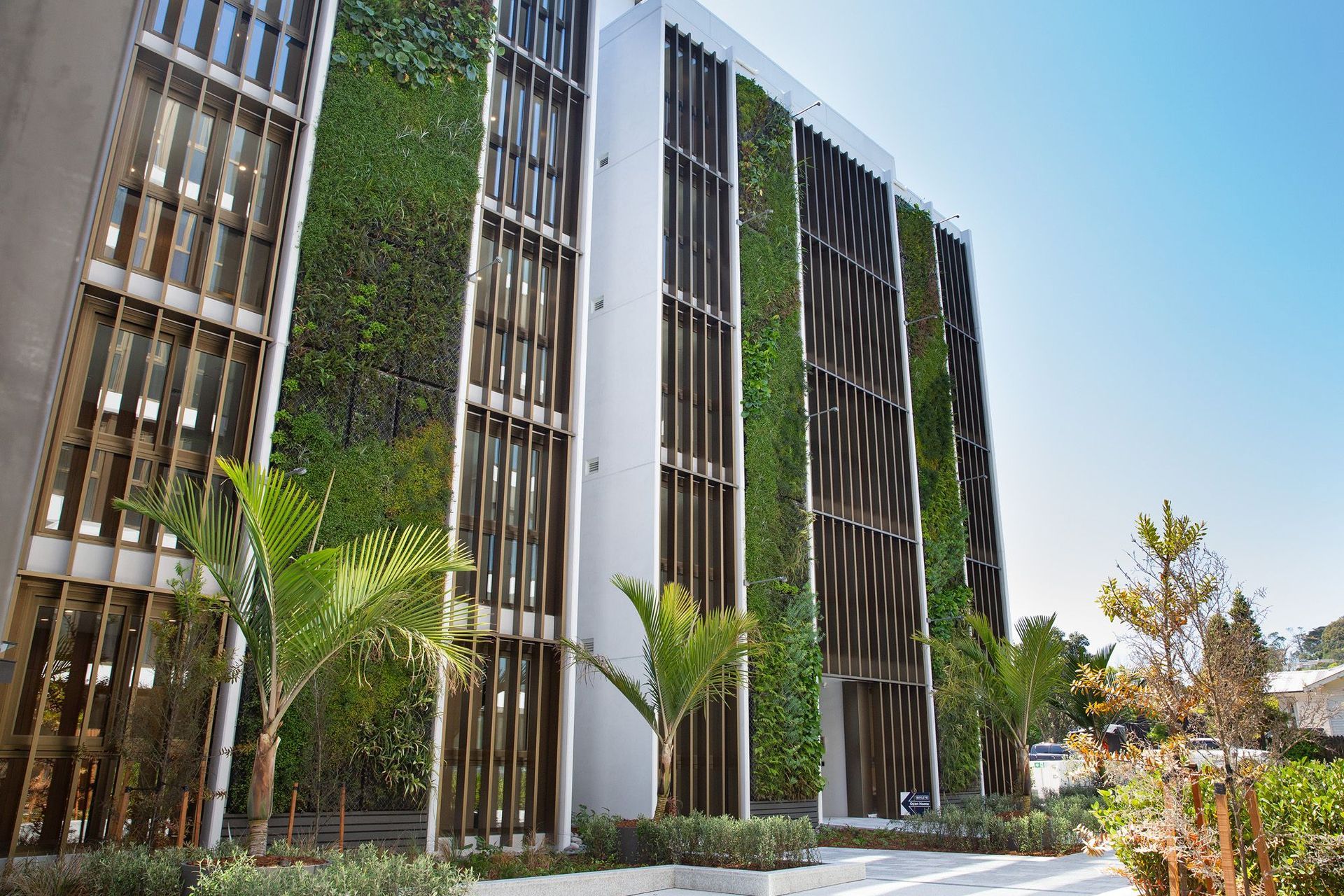Small Landscapes – creating green spaces around the home
Written by
18 February 2020
•
10 min read


Greening the home
Our desire to green our environments for better health and to give planet Earth a better chance of fighting climate change, is fuelling a growing trend to green our urban spaces, as well as the smaller spaces around the home. The acceleration of this trend has also been fuelled by the rapid increase in house prices, the growth in apartment living and that fact that the average floor area of new homes has dropped by about 21 per cent in the past ten years.
Courtyards, vertical walls, green roofs, decks and terraces can be the most productive spaces in the home and there are numerous ways we can transform them with a little knowledge about good design principles, by developing Design Boards for inspiration and seeking expertise from professionals to give those ideas direction or simply to learn more about planting.
“The strategies for landscaping and designing all green spaces is the same as for architecture. You apply the same principles, such as scale, texture, breaking up the mass and so on and, most importantly, by answering the question, ‘how can we make spaces that feel good to be in?',” says Graham Cleary, who is the founding director of Natural Habitats.
Over 35 years, Graham has ‘greened’ just about every type of public and private space you can imagine – from retail developments, including Smales Farm Goodside (for which Natural Habitats won the Supreme Landscape Award 2019), Westfield Newmarket and Commercial Bay in Auckland, to motorways, including a 29km stretch between Mackays and Peka Peka in Wellington, as well as apartment buildings and Auckland's high-end houses, including his own home.
“Not long ago, I downsized from a big family home to a much smaller house with a small garden of about 150m²,” says Graham. “I made the whole garden seem a lot bigger by cutting the garden up into distinct spaces and rooms, each with its own different use. Within that, I have used green walls, not only to be beautiful but to produce food as well.”
Having a small outdoor area doesn’t mean you need to lose touch with producing your own vegetables, fruits and herbs, or with being an active gardener and staying in touch with nature.
Growing productive small green spaces
Having a small outdoor area doesn’t mean you need to lose touch with producing your own vegetables, fruits and herbs, or with being an active gardener and staying in touch with nature. “For me, a desire to produce fruit and vegetables – using certain green walls and containers – has worked really successfully and didn’t require as much effort or cost as you might imagine. You just need to learn a few simple rules and know that the process will become much simpler over time.”
A good way to grow a green thumb is to learn the basics of gardening, like pruning and topiary. “You can easily learn how to train a fruit tree to grow flat on a wall,” he suggests. “Plants don’t naturally want to grow flat or espalier but, rather, towards the light, so it does take a bit of management to train them the way you want; however, now they’re established, I find I only spend about one hour per year pruning each plant into shape.”
It is now possible to buy just about any plant in dwarf form – aside from citrus and stone fruit, the choices are endless, says Graham. “This opens up a range of productive plants that you can include in a small garden and that are easy to maintain.”
It is also helpful to understand what will grow well in your local area, which can be learned simply by chatting to neighbours with green fingers. “One thing I’ve learnt is that even plants that come from hot places will bolt in hot weather; for example, coriander needs tons of water literally dripping on the plants to survive.”
And don’t think that just because one or two plants die that you can’t learn to grow a successful garden. “It’s good to remember that plants are like us humans; they don’t like to be isolated. While they don’t normally feed off each other, plant associations are very real. Fruit trees, for example, love herbs growing underneath,” Graham says.
Structures come to life when plants are grown on them. One recent innovation is the use of ‘green’ panels as balustrades, which have beautiful verdant edges, rather than just seeing the building’s hard edges.
Growing vertically – green walls and balustrades
Vertical surfaces are the most popular way to green a space and are a really easy way to gain more metreage in a smaller outdoor area. Greening walls successfully is all about position, working with the dimensions and the right planting, while other outdoor spaces can also be enlivened by adding structures like pergolas and balustrades with planting on them.
“Structures come to life when plants are grown on them. One recent innovation is the use of ‘green’ panels as balustrades, which have beautiful verdant edges, rather than just seeing the building’s hard edges. You can add a ‘green’ feel to decks in this way and I’m loving the new waterproofed canvas roofs on pergolas, which offer a lightweight outdoorsy feel to any outdoor room by letting in light and fresh air,” he says.
Greening our cities with living roofs and walls and productive gardens
A number of countries around the world have been greening buildings for decades, with policies in place to encourage it. Singapore’s government, for example, has offered subsidies to push the development of green walls and roofs in both the public and private realms in order to make spaces more hospitable. “We are seeing more and more green roofs and walls on large buildings here now, created by developers,” he says."But authorities are still lagging behind, especially in Auckland."
In Auckland, rooftops can represent approximately 40 to 50 per cent of impervious surfaces in commercial and industrial areas and up to 25 per cent for residential areas so the opportunity to green our cities is huge. Green roofs can also have a significant role to play in stormwater management, which is crucial as Auckland’s stormwater infrastructure currently requires upgrading to curb pollution and the growing supply of housing.
“Many people don’t realise that Auckland Council already has planning policies to support green roofs, but they and central government need to be big promoters of this as a solution. At the moment, it is starting on a tiny scale,” he says.
"Currently, we are working with developers Precinct Properties, finalising the new Commercial Bay precinct in downtown Auckland, which includes the Sky Terrace – a large roof garden on the fifth floor. It’s a massive investment for them to make but it’s uber cool and very arty, with beautiful organic furniture, green walls and native planting."
"It is also exciting to see and be part of the hugely successful Westfield Newmarket, where we now have the Southern Hemisphere's largest area of greenwalls. Westfield has changed the way they are designing their retail projects and Westfield Newmarket is their benchmark 'Living Mall', because the public wants to recreate and shop in green spaces. People enjoy nature and the concept of living well and, here in New Zealand, the idea of welcoming, green urban spaces feels appropriate to our context.”
Gardens along the verges of our streets are also becoming more commonplace. “Why do sidewalks have to be grass? We have just created a productive garden outside our office, so we now look after the curb,” says Graham. “It’s now an unusual space with recycled things and vertical planters, rather than a boring old sidewalk. There is a school just down the road and the kids run about and play in the garden, so it’s an interesting place for them now, whereas, before, they would just run on by.
How green technologies are helping to create change
One of the reasons we are seeing more greening of urban spaces is that new technological developments are making the construction of green roofs and walls much easier and more cost effective.
“We have invested a lot of research and development into plant innovations for green walls and roofs. There are a lot of considerations to make, such as the budget and the weight factor. If you’re adding a roof terrace or green wall onto a building, for example, then you’re adding more weight to the structure, so we have worked with Callaghan Innovation on R&D to spring that forward. We asked the question, ‘How can we make green walls and roofs lighter?”
They discovered that you don’t necessarily have to spend more money on the structure to hold up green roofs and walls by using a unique, lightweight and fully automated system for soil-less vertical gardens installed on the surface of a structure. The company created one of the first large green roofs in New Zealand back in 1994 and, since then, it has developed a system that involves pre-growing vegetation into modular panels called EcoPillows, which speeds up the installation of green roofs and creates an instant visual impact.
While it is well proven that bringing nature into the city benefits plants, insects, water and air quality, improving human health and wellbeing has to be a leading reason to green our built environment. Being in nature has been shown to improve mood and to have a measurable effect on blood pressure, heart rate and stress hormone levels, which also makes us more productive when working. In fact, research has shown that even just seeing nature can cut a patient’s hospital visit by half, while some New Zealand prisons use gardening as part of their rehabilitation programme due to its therapeutic effects.
It’s clear that at home, no matter the size, greening your environment is a no-brainer, so we’ve compiled a few useful tips to get you started.
Ten tips for greening small spaces
1. Growing micro greens and vege pods in small spaces is an easy way to create your own produce while offering real health benefits.
2. Make a small garden seem larger by breaking it up into smaller spaces or rooms, each with a designated purpose.
3. Maximise space by growing vertically up walls and don’t be afraid to try your hand at learning to prune so you can grow fruit trees up walls.
4. Plants are like us humans – they don’t like to be isolated but instead to be planted with companions.
5. Conservatories, courtyards and in-between spaces generally require plants that like soft, filtered light, not harsh north-facing sun.
6. Plants in sheltered spaces typically require less watering than you might think to ensure they are lush and healthy; they just need ‘regular’ feeding and watering, rather than the drought-then-drowning schedule beloved by newbie plant lovers.
7. Learn about what will grow well in your local area simply by chatting to green-fingered neighbours and friends.
8. Create Design Boards around small green spaces to give you inspiration.
9. Fill the inside of your home with plants too and enjoy the proven health benefits.
10. Consider building a green roof to help regulate your home’s internal temperature and to play your part in greening our cities.


